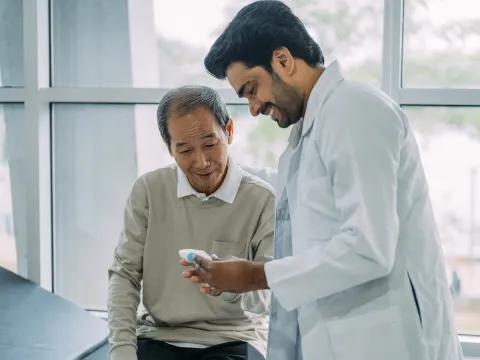- AdventHealth

Choose the health content that’s right for you, and get it delivered right in your inbox.
With the start of a new year comes a brand-new opportunity to make your health a priority. Whether you’ve written down a resolution to be physically healthier or want to be proactive earlier in the year, a great first step is to schedule a women’s health screening.
Health screenings — often done in annual checkups and exams — can give you important insights about your health and find issues early when they’re easiest to treat, including cancer. And as many of the top health conditions in women are preventable, screenings are an important way to stay on top of your health at every age and stage of life.
Take a healthy step early this year and schedule one of these essential women’s screenings for greater peace of mind.
Schedule These 6 Women’s Health Screenings
Your primary care provider can recommend the right exams for you based on your age and health history, and these are some of the most important screenings for women overall.
1. Cholesterol Test (Starting at Age 45)
Most women should undergo regular cholesterol screening starting at age 45. However, you should start cholesterol screening at age 20 if you:
- Are a smoker
- Are obese
Have diabetes, high blood pressure (hypertension) or heart disease
You should expect to undergo cholesterol screening every five years. A cholesterol test can reveal insights about your heart health, and identifying and treating a problem with your cholesterol levels can help reduce your risk of heart disease.
2. Colonoscopy (Starting at Age 45)
Colorectal cancer is the third most common cancer affecting women. But it’s more than 90% curable if diagnosed early. For women with an average risk of colon cancer, colonoscopies should start at age 45 — which is now earlier than the previously recommended age 50 — and women should get them every 10 years.
A colonoscopy involves the use of a narrow, flexible tube with a camera that’s used to inspect the colon for cancer. This screening is particularly effective because it allows doctors to find and remove polyps, the small growths that can evolve into cancer.
The screening usually takes less than an hour and your doctor will provide some level of anesthesia to help you feel comfortable during the process.
3. Screening Mammogram (Starting at Age 40)
While it’s important to do breast self-exams at every age after puberty, after you turn 40, you should start getting a screening mammogram every year. Mammograms are perhaps the most well-known cancer screening tests. They’re fast, easy, inexpensive and painless — and mammograms save lives every year.
Screening mammograms look for signs of breast cancer, like tumors, and are the most powerful and effective tools available to detect breast cancer at the earliest possible stage before it can spread to other parts of the body.
Mammogram technology has come a long way in recent years and is now available in 3D. The 3D mammograms and other imaging techniques like ultrasound and MRI are generally only required if your care provider needs to further investigate a tumor, cysts or dense breast tissue.
4. Pap Test (or Pap Smear)
During your annual well-woman exam (often done with an OB/GYN or primary care physician), your provider may perform a pelvic examination and a Pap test (also called a Pap smear).
In a Pap test, a brush or spatula is used to remove cells from the cervix. Follow-up testing reveals whether abnormal cells (that could lead to cervical cancer) are present. A Pap test shouldn’t be painful, but it may be uncomfortable.
Women ages 21 to 65 should have a Pap test done once every three years. If you’ve had a hysterectomy, it's still recommended that you have a pelvic exam every three to five years, even if you’ve never had an abnormal result.
5. Skin Cancer Screening
There are many factors that play into the screening schedule for preventive skin exams, so speak with your primary care provider or dermatologist to determine the schedule that’s right for you.
Undergoing regular skin exams enables your health care provider to track any worrisome moles, lumps or bumps you may have, along with identifying and treating early signs of skin cancer. There are also steps you can take regularly to reduce your risk of developing skin cancer.
6. Vision Exam
Even if you have 20/20 vision, eye exams can be a healthy step to ensure you can see well for longer. If you have an ophthalmologist, they should be familiar with your eye health and any changes in your vision. Ask them how often you should come in for a vision exam. If you don’t have an eye doctor, you can also ask your primary care physician at your annual physical about vision tests and when you should get them.
Find Women’s Care Near You to Book Your Screenings
From OB/GYNs to primary care providers and every specialty in between, our dedicated and experienced women’s health care physicians are here to help you take charge of your health. Learn more about our women’s care in your area and find the right provider for you so you can get important screenings done early.



